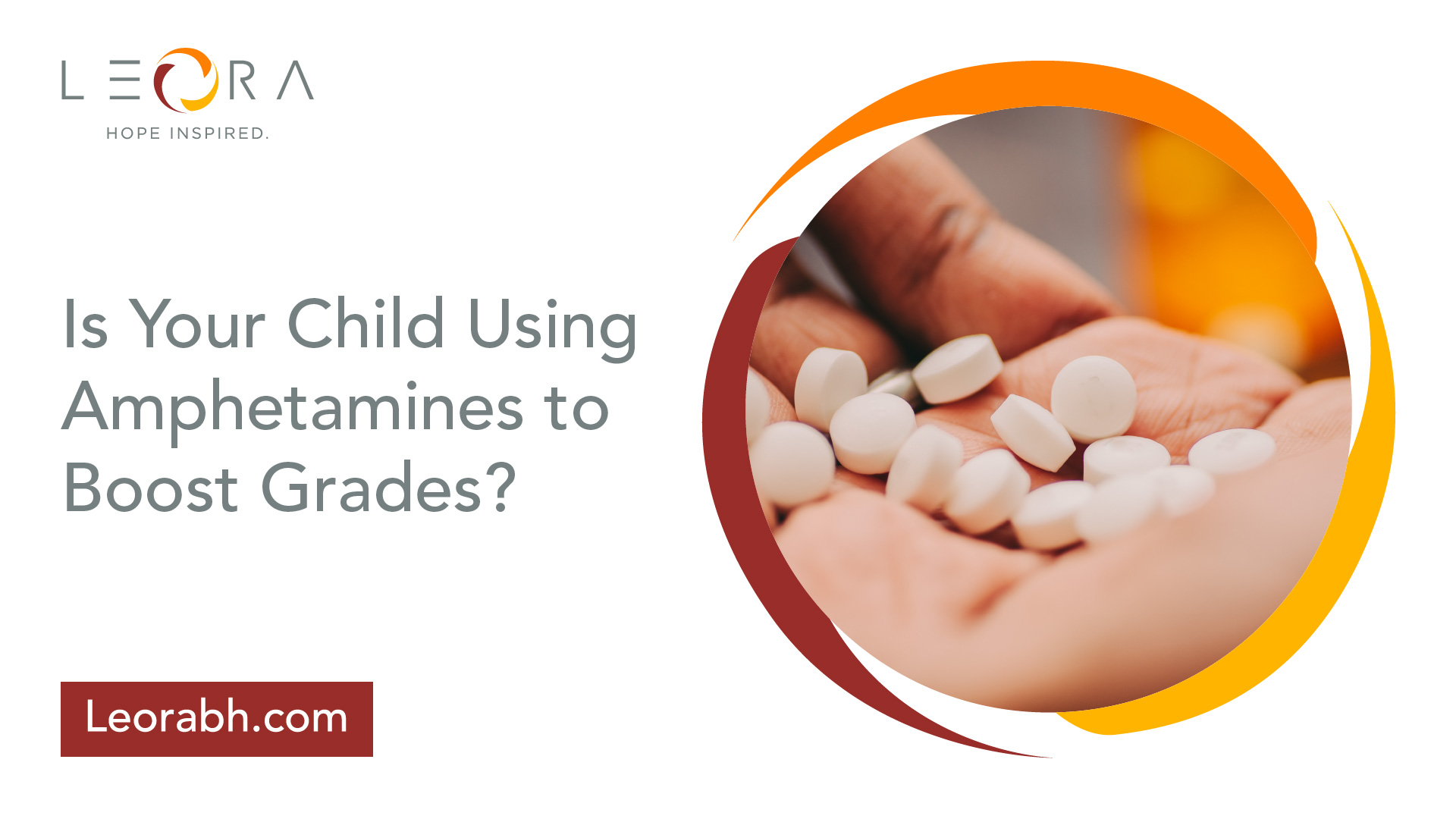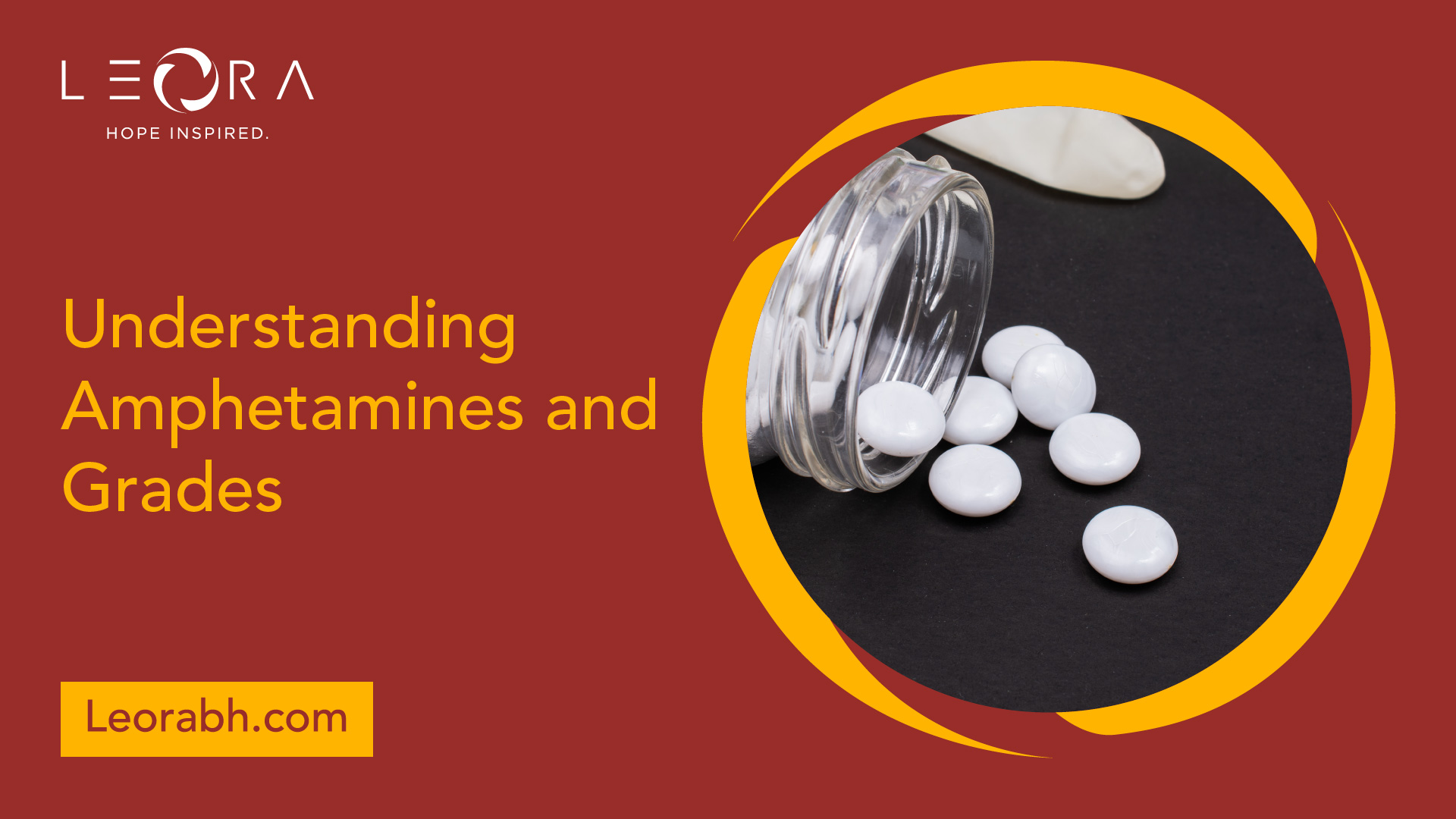Is Your Child Using Amphetamines to Boost Grades?
Is your child using amphetamines to boost grades? Uncover the truth behind academic performance and substance use.
Identifying Substance Use in Children
As parents, it is essential to be vigilant and aware of any potential substance use in children. Early identification can lead to timely intervention and support. In this section, we will discuss the signs of substance use to look out for and the behavioral changes that may indicate a child is using substances.

Signs of Substance Use
Identifying signs of substance use in children can be challenging, as some symptoms may overlap with normal adolescent behavior. However, there are several indicators that parents should be aware of. According to the Quebec Health Ministry, signs that could indicate a child is using drugs include:
- Sudden changes in friends or the formation of new relationships
- Deteriorating relationships with family and friends
- Declining behavior and grades (Montreal Gazette)
It's important to note that these signs may not definitively confirm substance use, but they serve as red flags that warrant further investigation and communication with your child.
Behavioral Changes to Watch For
Behavioral changes can provide valuable insights into a child's mental and emotional state. Stressful life events, friendship changes, or loss of interest in activities can trigger behavior changes in children, potentially leading them to seek solace in substances like amphetamines. Some behavioral changes to watch for include:
- Lack of focus and motivation
- Restlessness or hyperactivity
- Social withdrawal or isolation
- Mood swings or irritability
- Decline in academic performance
- Loss of interest in activities and hobbies (Commonwealth Charter Academy)
It's important to remember that these changes may not necessarily indicate substance use, as they can also be attributed to other factors such as puberty, stress, or emotional challenges. However, if you notice a combination of these behavioral changes, it may be necessary to have an open and supportive conversation with your child to understand their experiences and any potential substance use.
By being attentive to signs of substance use and observing behavioral changes, parents can play a proactive role in addressing any concerns and providing the necessary support to their children. Open communication and a supportive environment are key in fostering a safe and trusting space for children to share their struggles and seek help when needed.

Understanding Amphetamines and Grades
When exploring the connection between amphetamines and academic performance in children, it is crucial to have a comprehensive understanding of the impact of these drugs on grades and the reasons why children may turn to amphetamines.
Impact of Amphetamines on Academic Performance
Amphetamines, a class of stimulant drugs, can have both short-term and long-term effects on academic performance. In the short term, amphetamines may provide a temporary boost in energy, focus, and concentration. This can lead to increased alertness and improved performance on tasks that require sustained attention, such as studying or taking tests.
However, the long-term consequences of amphetamine use can be detrimental to academic success. Prolonged use of amphetamines can disrupt sleep patterns, leading to sleep deprivation, which negatively affects cognitive functioning, memory, and learning abilities. Additionally, amphetamines can create a cycle of dependency, where the individual becomes reliant on the drug to maintain their academic performance.
It is important to note that the use of amphetamines as a study aid is not a sustainable or healthy approach to academic success. Dependence on these drugs can lead to a range of negative consequences, including addiction, physical and mental health problems, and impaired overall well-being.
Reasons Children Turn to Amphetamines
Children may turn to amphetamines for various reasons, seeking ways to enhance their academic performance. Some common factors that can contribute to this behavior include:
- Coping with changes: Adolescence is a period of significant changes, both physically and emotionally. Teens may turn to substances, including amphetamines, as a way to cope with mood swings and other challenges that arise during this time.
- Stressful life events: Children may experience behavioral changes, such as a lack of focus, motivation, restlessness, or even depression, in response to stressful life events. These changes could potentially trigger the use of substances like amphetamines as a coping mechanism.
- Friendship or relationship changes: Changes in friendships or relationships can significantly impact a child's behavior. Conflicts or the formation of new friendships may prompt kids to seek comfort or acceptance, leading them to turn to substances like amphetamines [1].
- Loss of interest in activities: When children experience a loss of interest in their usual activities and hobbies, it may indicate a need for exploration of new interests. This shift can sometimes prompt kids to seek ways to enhance their performance, including turning to substances like amphetamines to improve their academic achievements.
- Puberty-related changes: Adolescents undergoing puberty often face mood swings, new behaviors, and a potential loss of interest in academics. These changes can sometimes drive teenagers to resort to substances, such as amphetamines, as a means of managing the emotional and physical transformations they are going through [1].
It is crucial for parents, educators, and caregivers to be vigilant about these potential risk factors and provide guidance, support, and resources to help children navigate these challenges in healthier ways.

Mental Health and Substance Use
The relationship between mental health and substance use in children is a complex and concerning issue. Two important aspects to consider are the relationship between depression and substance use, as well as the impact of stressful life events on substance use.
Relationship Between Depression and Substance Use
Depression can be a significant factor that leads some children to turn to substances such as amphetamines. According to WebMD, children may begin using drugs or alcohol as a sign and symptom of depression, particularly if they are over the age of 12. It is essential to recognize that depression can affect children of all ages, with different patterns of incidence. Up to 3% of children and 8% of adolescents in the United States experience depression, with the condition being more common in boys under the age of 10 and then shifting to a greater incidence in girls by age 16.
Children with a family history of depression or those in chaotic or conflicted families are at a higher risk of developing depression. It is important for parents and caregivers to be aware of the signs and symptoms of depression in children, which can include persistent sadness, irritability, changes in appetite or sleep patterns, withdrawal from family and friends, and a decline in academic performance.
Proper diagnosis and treatment of depression in children are crucial. The FDA recognizes fluoxetine (Prozac) as an antidepressant for treating depression in children between the ages of 8 and 18. However, the most effective approach to treating depression in children is a combination of psychotherapy and medication. Early intervention and appropriate support can help children manage their mental health and reduce the likelihood of turning to substances to cope.
Impact of Stressful Life Events on Substance Use
Stressful life events can also contribute to substance use in children. Children who experience traumatic events, such as divorce, loss of a loved one, or abuse, may seek solace in substances as a way to cope with their emotions. These events can disrupt their sense of security and stability, making them more vulnerable to engaging in risky behaviors, including substance use.
It is important for parents and caregivers to provide a supportive environment for children who have experienced stressful life events. Creating open lines of communication and offering reassurance can help children express their feelings and seek healthier coping mechanisms. Additionally, seeking professional help, such as therapy or counseling, can provide children with the necessary tools to navigate through difficult times.
By recognizing the connection between mental health and substance use, parents, caregivers, and educators can play a vital role in identifying and addressing these issues. Early intervention, appropriate treatment, and supportive environments are key to helping children manage their mental health and reduce the risk of engaging in substance use as a coping mechanism.
Parental Influence on Substance Use
Parents play a significant role in shaping their children's behavior, including their decisions regarding substance use. Open communication and setting clear rules and expectations are essential aspects of parental influence in preventing and addressing substance use.
Open Communication with Children
Maintaining a strong and open relationship with children during their adolescence is crucial in addressing substance use. According to the Substance Abuse and Mental Health Services Administration (SAMHSA), parents have a significant influence on their children's decisions to experiment with alcohol and other drugs. Having open conversations about the risks and consequences of substance use allows parents to provide accurate information and guidance.
When parents create supportive and nurturing environments and discuss alcohol and other drugs early and often, they can protect their children from engaging in high-risk behaviors associated with substance use [3]. By actively engaging in conversations, parents can address their children's concerns, dispel myths, and provide the necessary guidance to make informed decisions.
Setting Clear Rules and Expectations
Establishing clear rules and expectations regarding alcohol and drug use is crucial for parents. By discussing the risks of underage drinking and substance use, parents can help their children understand the potential harm associated with these substances. Setting boundaries and expectations regarding substance use sends a clear message to children about what is acceptable behavior.
By creating a supportive and non-judgmental environment, parents can encourage open dialogue and honest conversations about substance use. Establishing rules around curfews, peer groups, and the consequences of breaking these rules can help guide children's decision-making processes.
It's important for parents to be consistent in enforcing these rules and expectations. Consistency provides children with a sense of structure and helps them understand the importance of making responsible choices.
By maintaining open communication and setting clear rules and expectations, parents can positively influence their children's decisions regarding substance use. These proactive measures create a supportive environment that empowers children to make informed choices and avoid the potential risks associated with substance use.
Statistics on Substance Use Among Children
Understanding the prevalence and risks associated with substance use among children is essential in addressing the issue effectively. By examining drug use trends among high school students and the risks associated with substance use, we can gain valuable insights into this concerning phenomenon.
Drug Use Trends Among High School Students
According to a survey conducted by the Institut de la statistique du Québec in 2019, approximately 18% of high school students reported using drugs in the preceding 12 months. This represents a decrease from the 24% reported in 2013. While it is encouraging to see a decline in drug use, it is still crucial to remain vigilant and address the underlying factors contributing to substance abuse among adolescents.
The survey also shed light on specific drug use trends among high school students. Tobacco use showed a decrease, with 9% of students reporting its use in 2019, compared to 12% in 2013. However, vaping has become a significant concern, with a significant increase from 4% in 2013 to 21% in 2019. By Secondary 5, this proportion jumps to 35% [4]. These figures highlight the importance of addressing the rise of vaping among high school students.
Cannabis usage among students also decreased, with 17% reporting its use in 2019 compared to 23% in 2013. It is worth noting that less than 5% of students reported using other drugs or non-prescribed medication to get high [4]. While the overall trends indicate a decline in drug use, it is crucial to remain proactive in preventing substance abuse among children.
Risks Associated with Substance Use
Substance use among children poses various risks that can have detrimental effects on their physical, mental, and emotional well-being. Signs that could indicate a child is using drugs include having new friends, deteriorating relationships with family and friends, and declining behavior and grades, according to the Quebec Health Ministry [4].
While the risks associated with substance use can vary depending on the specific drug and individual circumstances, common risks include:
- Impaired cognitive function and academic performance: Substance use can have a significant impact on a child's ability to concentrate, retain information, and perform well academically. It can lead to a decline in grades and hinder their overall educational progress.
- Physical health consequences: Substance use can have adverse effects on a child's physical health, including respiratory problems, cardiovascular issues, and increased susceptibility to infections and diseases.
- Mental health complications: Substance use can contribute to or exacerbate mental health conditions such as depression, anxiety, and mood disorders. It can also increase the risk of self-harm and suicidal ideation.
- Social and behavioral problems: Substance use can lead to strained relationships with family, friends, and peers. It can also result in behavioral changes, including aggression, impulsivity, and engagement in risky behaviors.
- Legal and financial consequences: Substance use can lead to legal troubles, including involvement in criminal activities. Additionally, it can place a significant financial burden on individuals and their families due to the costs associated with acquiring substances and potential legal fees.
Understanding the risks associated with substance use is crucial in promoting prevention and early intervention efforts. By addressing these risks and fostering supportive environments for children, we can work towards mitigating the negative impact of substance use on their overall well-being.
Importance of Early Intervention
When it comes to addressing substance use in children, early intervention plays a crucial role in preventing potential long-term consequences. By recognizing the warning signs and creating supportive environments, parents and caregivers can help their children make healthier choices.
Recognizing Warning Signs
Recognizing the warning signs of substance use in children is essential for early intervention. Some common indicators include:
- Behavioral changes: Look out for sudden shifts in behavior, such as increased secrecy, isolation, or changes in social circles. These changes could potentially be influenced by friendship or relationship changes, conflicts, or the loss of interest in activities.
- Academic performance decline: Keep an eye on any significant drops in academic performance, as well as a sudden increase in focus or achievement. Some children may turn to amphetamines or other substances to boost their grades.
- Emotional and physical changes: Pay attention to mood swings, irritability, restlessness, or other uncharacteristic behaviors. Adolescents experiencing puberty may be particularly vulnerable to substance use as they navigate the challenges of emotional and physical transformations [1].
- Family history and environmental factors: Children with a family history of depression or those in chaotic or conflicted families may be at a higher risk of substance use. Stressful life events can also contribute to behavior changes and potentially trigger substance use.
Creating Supportive Environments
Creating a supportive environment is crucial in preventing and addressing substance use in children. Here are some strategies parents can employ:
- Open communication: Maintain open and honest communication with your child. Encourage them to share their thoughts, concerns, and experiences without fear of judgment. This allows for early and ongoing discussions about substance use and its associated risks [3].
- Setting clear rules and expectations: Establish clear rules and expectations regarding substance use. Clearly communicate the consequences of engaging in such behavior and reinforce the importance of making healthy choices.
- Creating a safe and nurturing environment: Foster a safe and nurturing environment at home. Encourage healthy activities, hobbies, and positive peer interactions. By providing a supportive foundation, children are less likely to turn to substances as a coping mechanism [3].
By recognizing warning signs early on and creating supportive environments, parents can play a vital role in preventing substance use and promoting their child's overall well-being. It is essential to maintain open lines of communication, establish clear expectations, and provide a safe and nurturing environment that fosters healthy choices.
References
Find Your Inner Light
Related Articles
Contact Us
Leora Behavioral Health offers a comprehensive addiction treatment programs to help you get your life back on track.
Our trained professionals will work with you to develop a personalized treatment plan that meets your unique needs. If you or someone you know is struggling with addiction, reach out to Leora Behavioral Health today.


.svg)





.svg)
.svg)
.svg)
.svg)